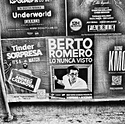jag2x
Member
- Joined
- Sep 13, 2005
- Messages
- 53
- Format
- 35mm
Hi Bruce,
I too am having a tough time trying to figure out in my head how to achieve a curve. Though I havent even got that far as yet to apply a curve.
I'm also following Christina's book on Alt Gum printing...a great resource I must say!
At the moment I'm trying to figure out the relationship between the solutions I'm using, but pushing and pulling the ml.
Anyhow I did come across Bill Mabrey website, http://www.billymabrey.com
He has a step by step guide on how to achieve it. Though the last part isnt fully detailed in photos, but the crux of it is there.
Not so sure if it'll help you, but in my mind what Bill says makes sense.
You can also wait for her new book I heard from the alt post that shes going to be publishing it at the end of the year, i'll be waiting for that for sure!
Good luck with it all..
cheer
Jacek
www.jagnight.com
I too am having a tough time trying to figure out in my head how to achieve a curve. Though I havent even got that far as yet to apply a curve.
I'm also following Christina's book on Alt Gum printing...a great resource I must say!
At the moment I'm trying to figure out the relationship between the solutions I'm using, but pushing and pulling the ml.
Anyhow I did come across Bill Mabrey website, http://www.billymabrey.com
He has a step by step guide on how to achieve it. Though the last part isnt fully detailed in photos, but the crux of it is there.
Not so sure if it'll help you, but in my mind what Bill says makes sense.
You can also wait for her new book I heard from the alt post that shes going to be publishing it at the end of the year, i'll be waiting for that for sure!

Good luck with it all..
cheer
Jacek
www.jagnight.com





